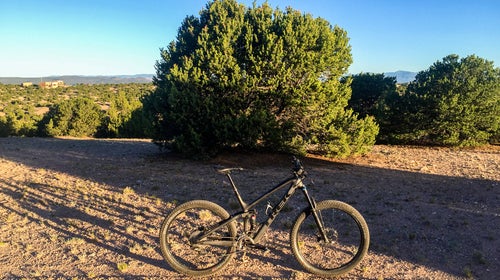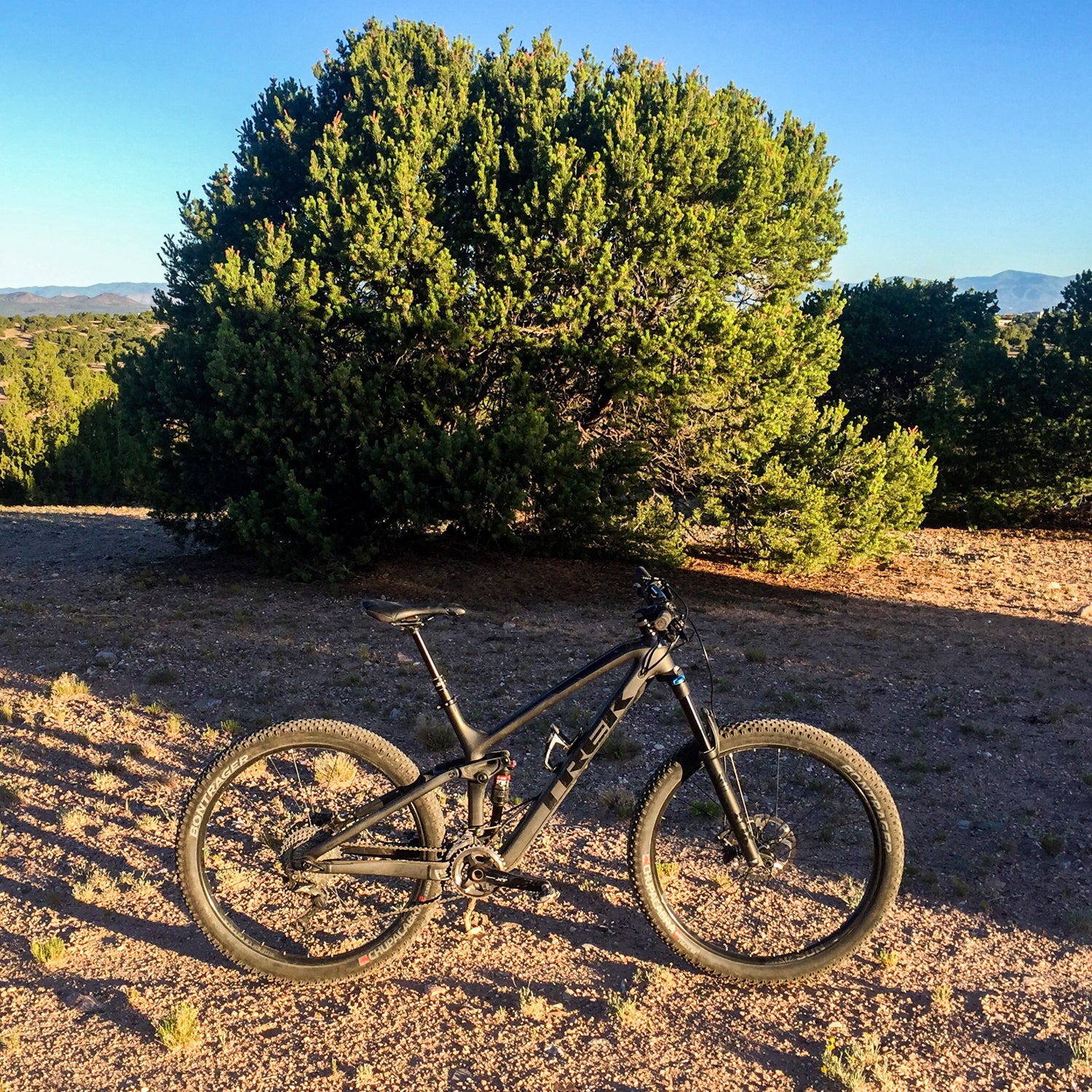Last year, when Trek entered the mid-fat mountain bike market with a remake of its successful Stache, it decided that 29+ was the optimal size for the hardtail. Now, the company has launched a new series of the popular full-suspension Fuel EX trail bike, which already comes in 27.5 and 29, in a 27.5+ version. It’s the Waterloo, Wisconsin, manufacturer’s entrée to the genre, and judging by our first month riding the bike, the company has done its design due diligence.
First, I really like the 2016 Fuel EX 29. It feels like one of the best balanced, most all-around-capable trail bikes I rode this year. For those who want one bike that’s capable enough for pretty much any terrain but still light enough to race, there are few better options. It’s also worth noting that Trek, just a week ago, announced a revised version of the Fuel EX 29 and 27.5 that makes both bikes slacker and adds travel—130 millimeters and 150 millimeters respectively. That’s in keeping with industry trends, and though I hate to see a good bike change, I have to imagine that the new models will likely be just as fleet and even more proficient.
Following suit with the changes to the rest of the line, the new Fuel EX 27.5+ feels very different from the 29er model I’ve been riding, beyond just the extra tire girth. It has more travel, with 130 millimeters of rear travel and 140 millimeters up front, and is lower slung, thanks to a slightly taller head angle and a bottom bracket that’s a full centimeter lower than before. It has the same Mino-Link chip in the suspension as before that allows angle adjustments to the bike, from a comfy 67.2 degrees in high to a downright slack 66.6 degrees in low. The rear end has been tightened up, too, with even shorter chain stays.
Tech talk aside, the bike basically feels more upright, more stable at speed, and overall more capable on rocky and technical riding. It has a centered, grounded feel, like you’re sitting inside the frame rather than on top of it, which makes for serious confidence at high speed. The bigger tires, 2.8-inch Bontrager Chucupabras, make the bike even more assertive as all that rubber grips like sticky tape when you lean the bike hard.
The downside of all that stability is that climbing performance has dropped incrementally. Though it still pedals fine, thanks to the dialed Fox Float EVOL shock, the lower BB had me knocking the pedals in rocky or rooted terrain. And of course the bigger tires mean more rotating weight, so you don’t have the same sprightly feeling in the steeps. The good news is that the frame will accommodate 29er wheels (with up to 2.4-inch tires), so you could theoretically own two sets of hoops for ultimate versatility. If I took that approach, I’d be tempted to go light and fast on the 29ers and then find bigger rubber for the 27.5+ (for instance the excellent ), because while the Chucupabras are great tires, they aren’t as capable as the bike and tend to wander and skitter in rocks and chunder.
On paper, the Fuel EX 27.5+ bears a striking resemblance to this year’s Gear of the Year-winning Specialized Stumpjumper 6Fattie, but they are actually very different bikes. The Specialized is more of an all-around trail machine that takes its cues from the shorter travel Camber, while the Trek feels robust and rowdy, as if it’s inspired by longer-travel enduro machines. Both would make excellent daily drivers, but the Fuel EX would be our recommendation for riders who live in rockier, techier places or those who prefer to push more on descents.
The full-suspension Trek Fuel EX 27.5 Plus won’t replace any existing models but simply complement them for riders in search of greater versatility. It’s available in three models, including the EX 5 ($2,400) and EX 8 ($3,300), both aluminum, as well as the carbon EX 9.8 ($5,300) that we’ve been testing.


